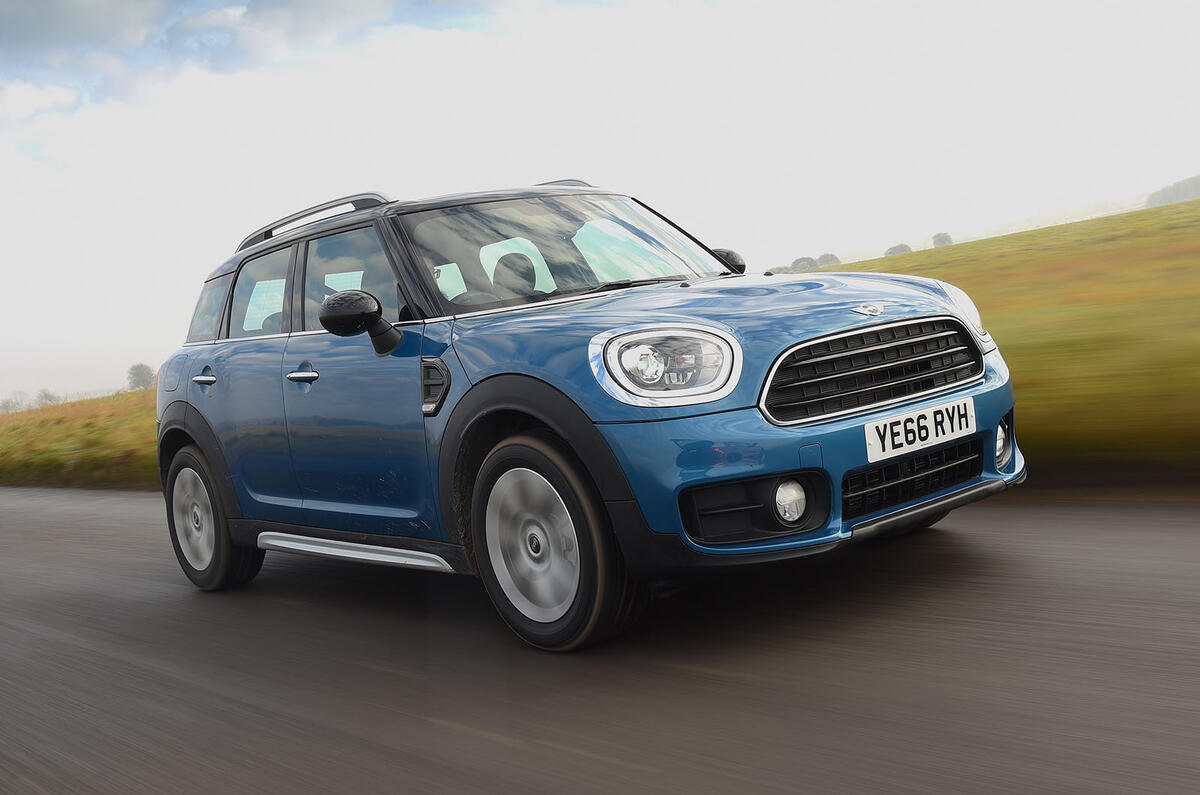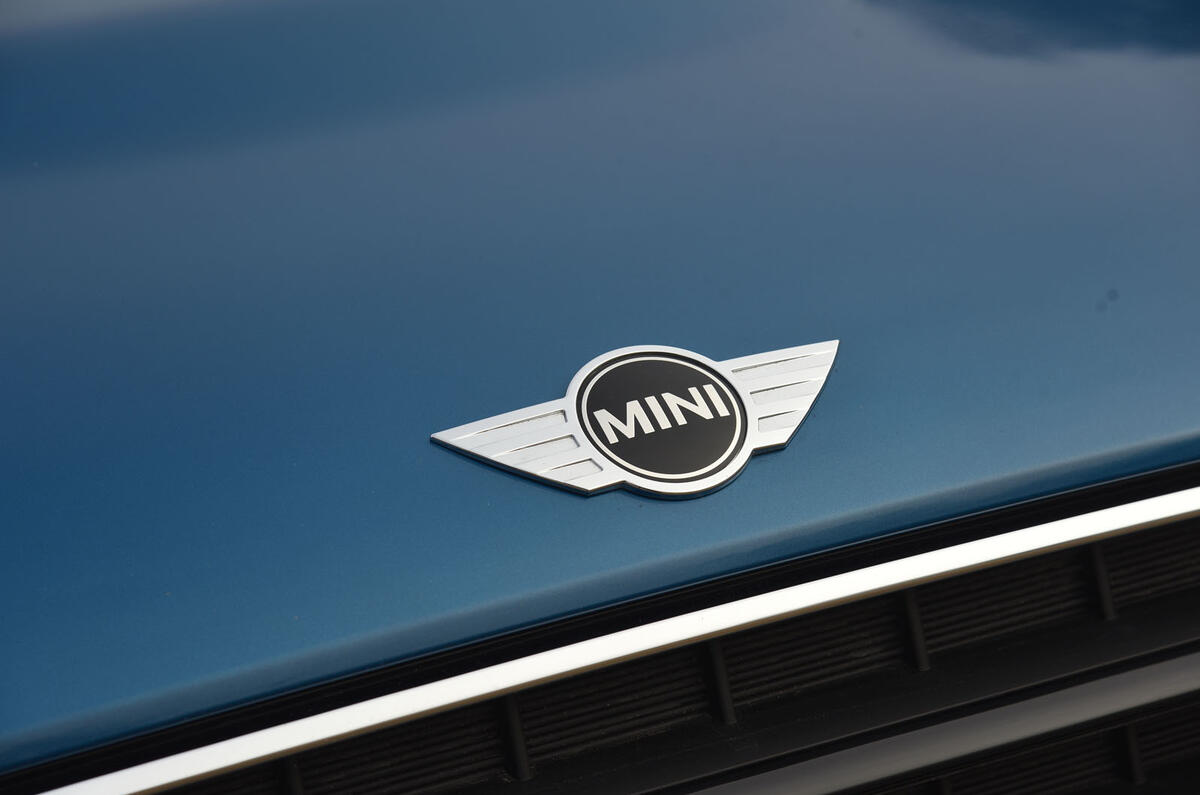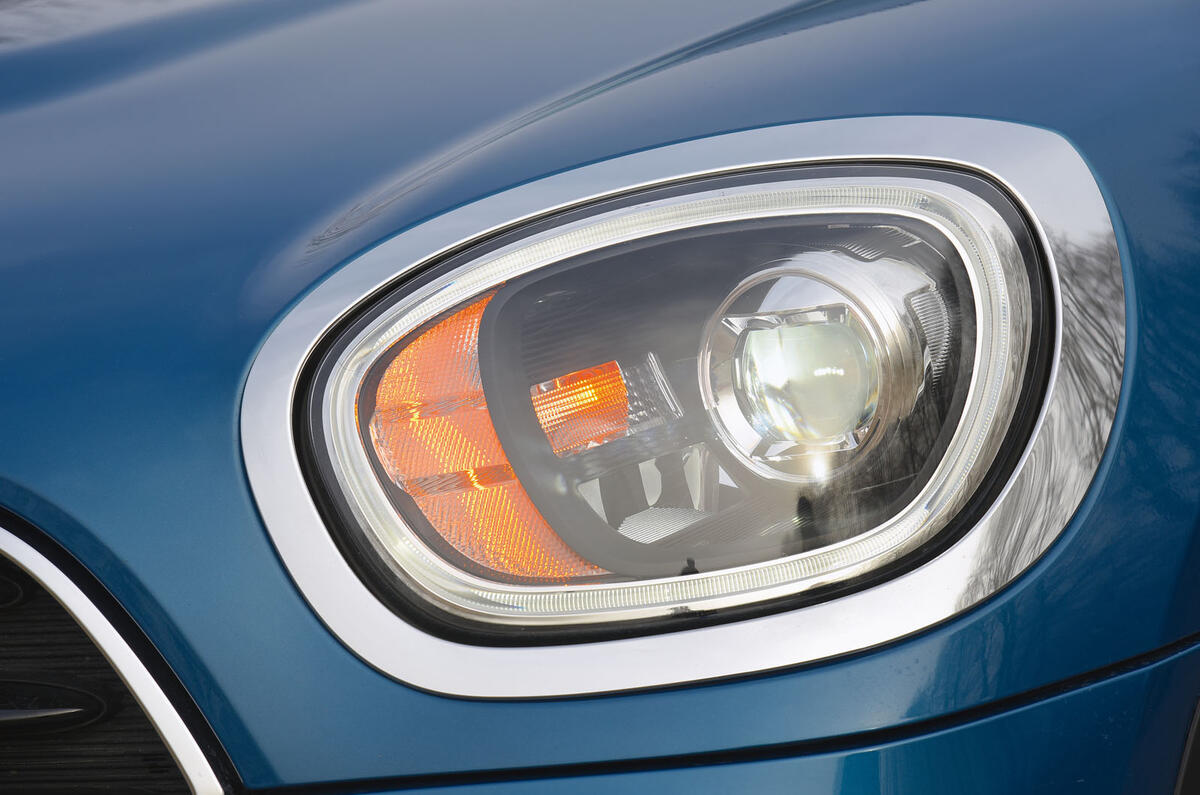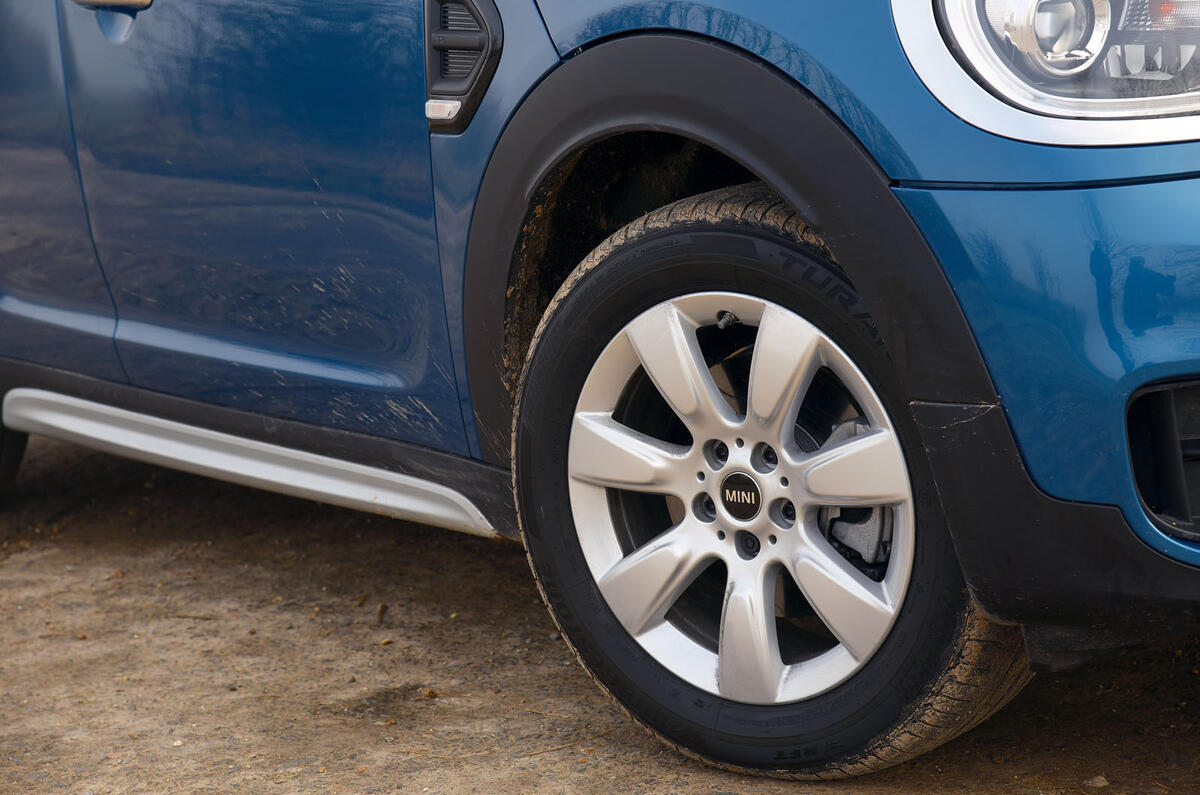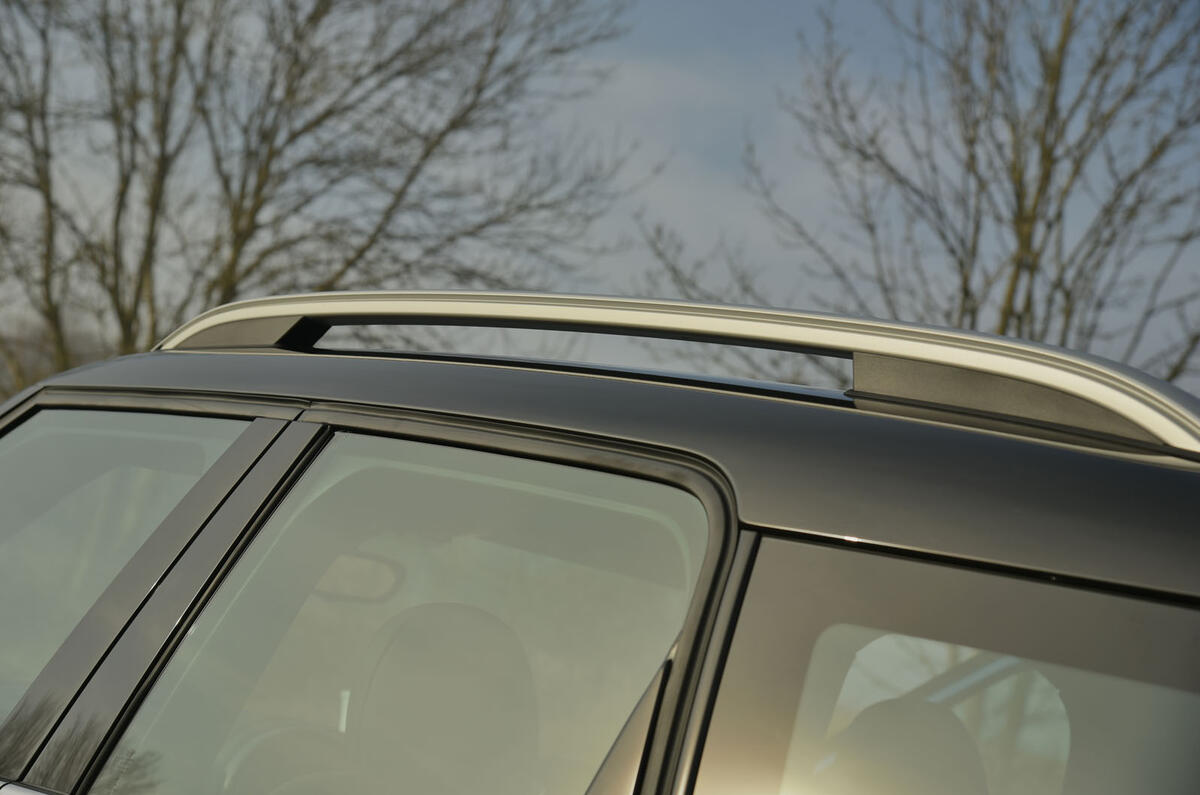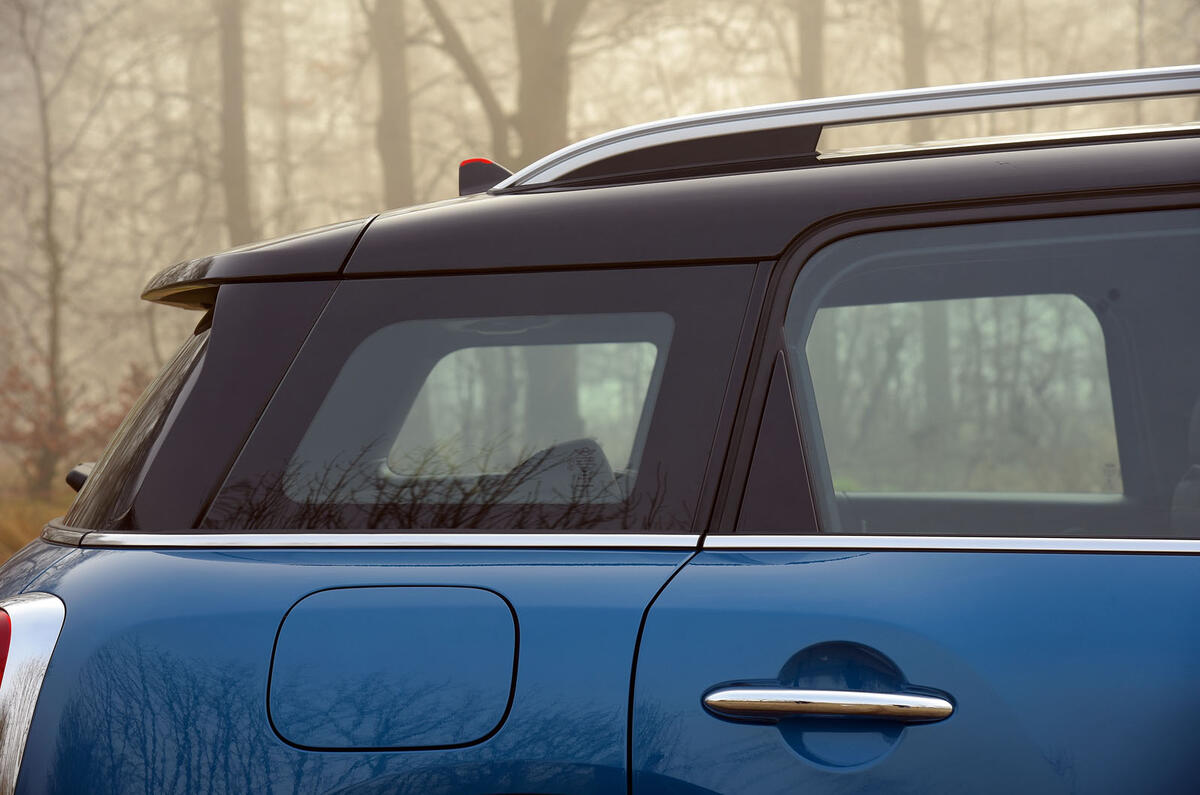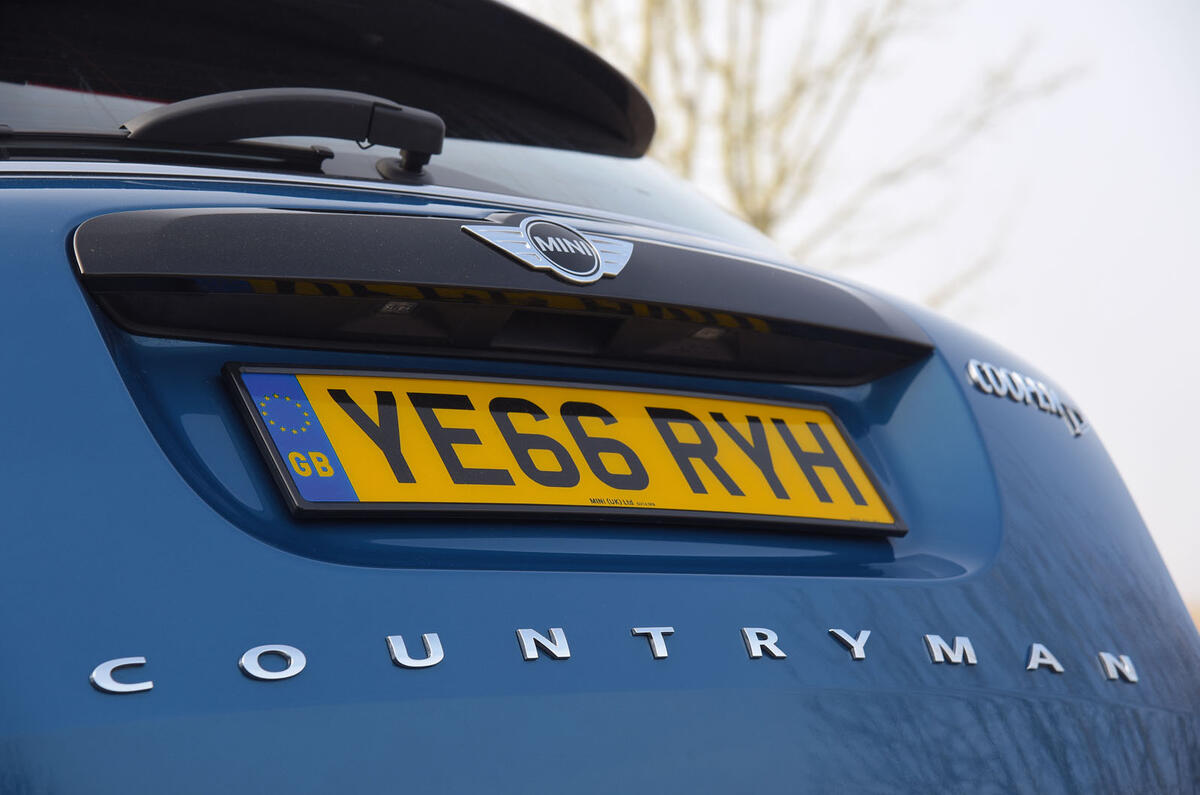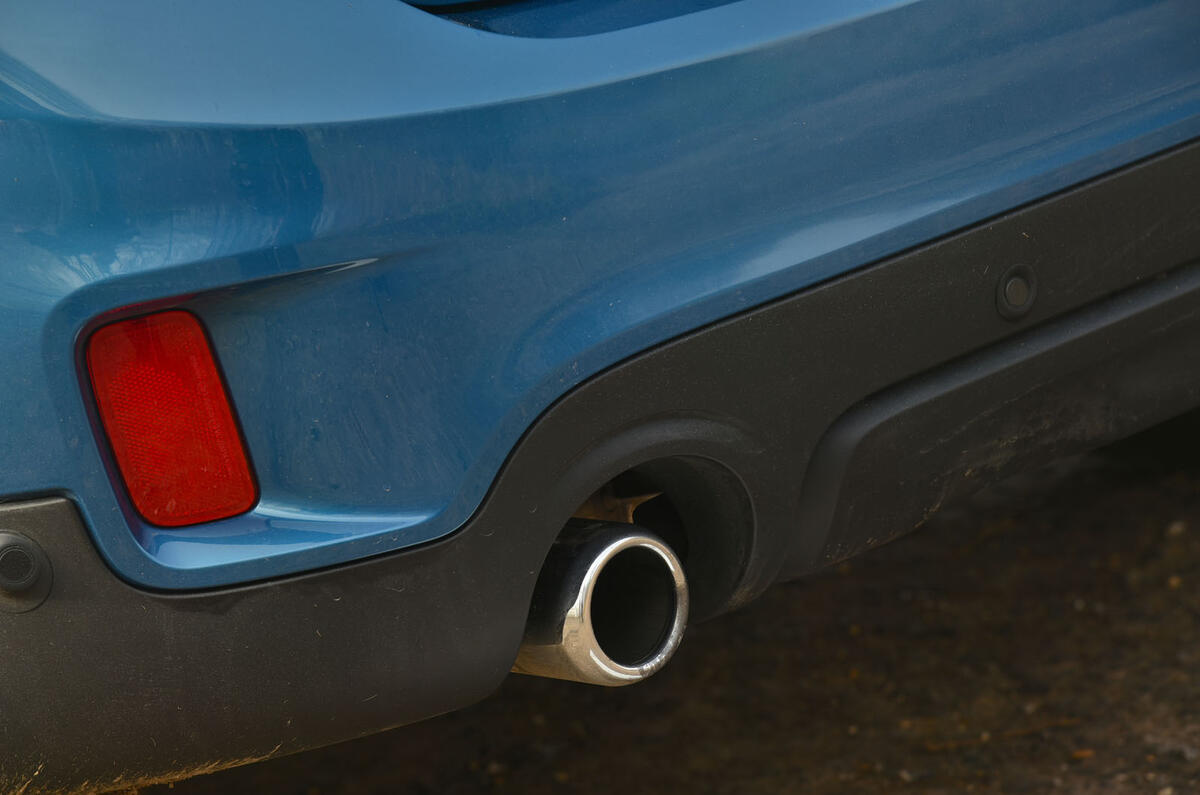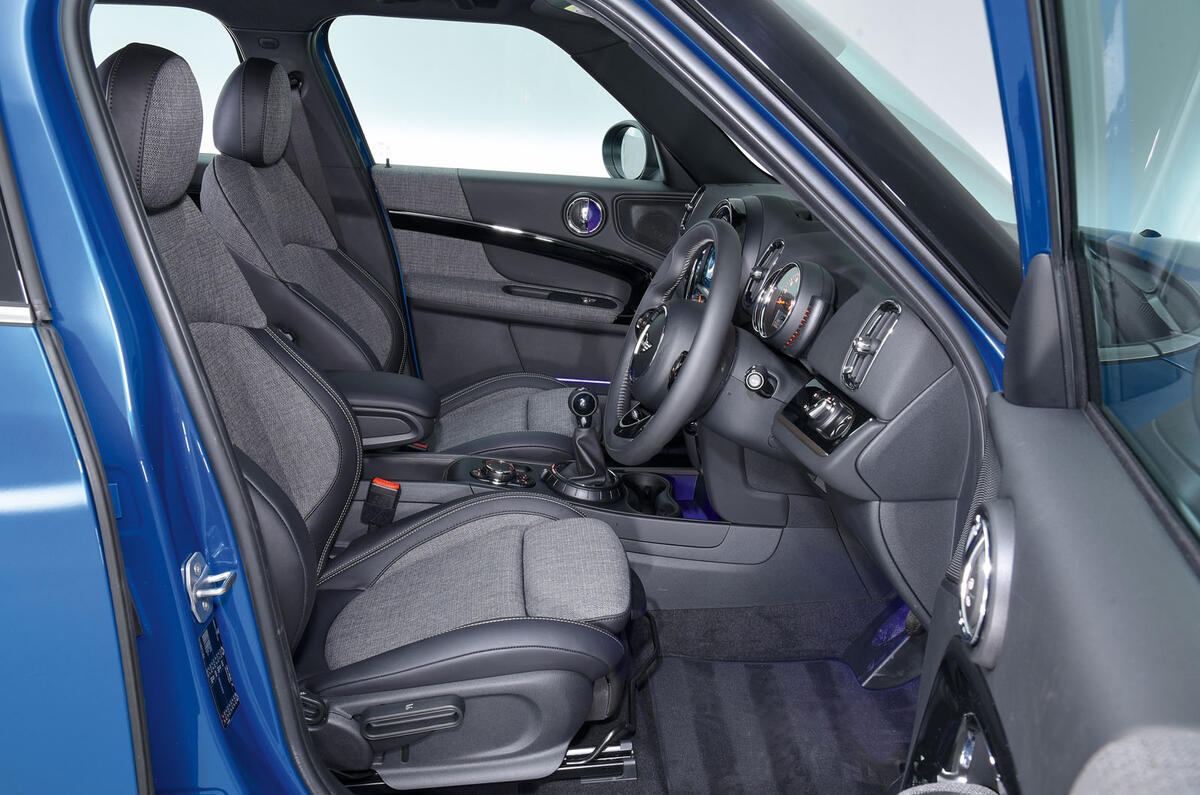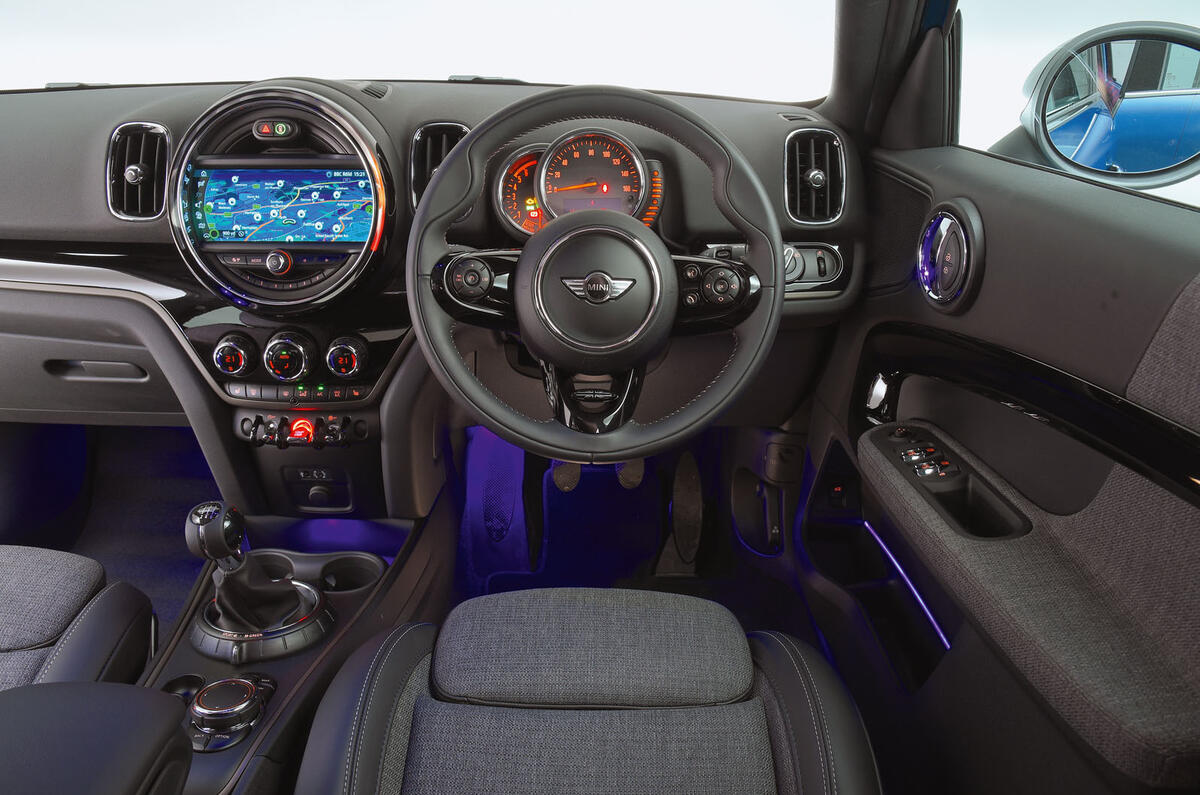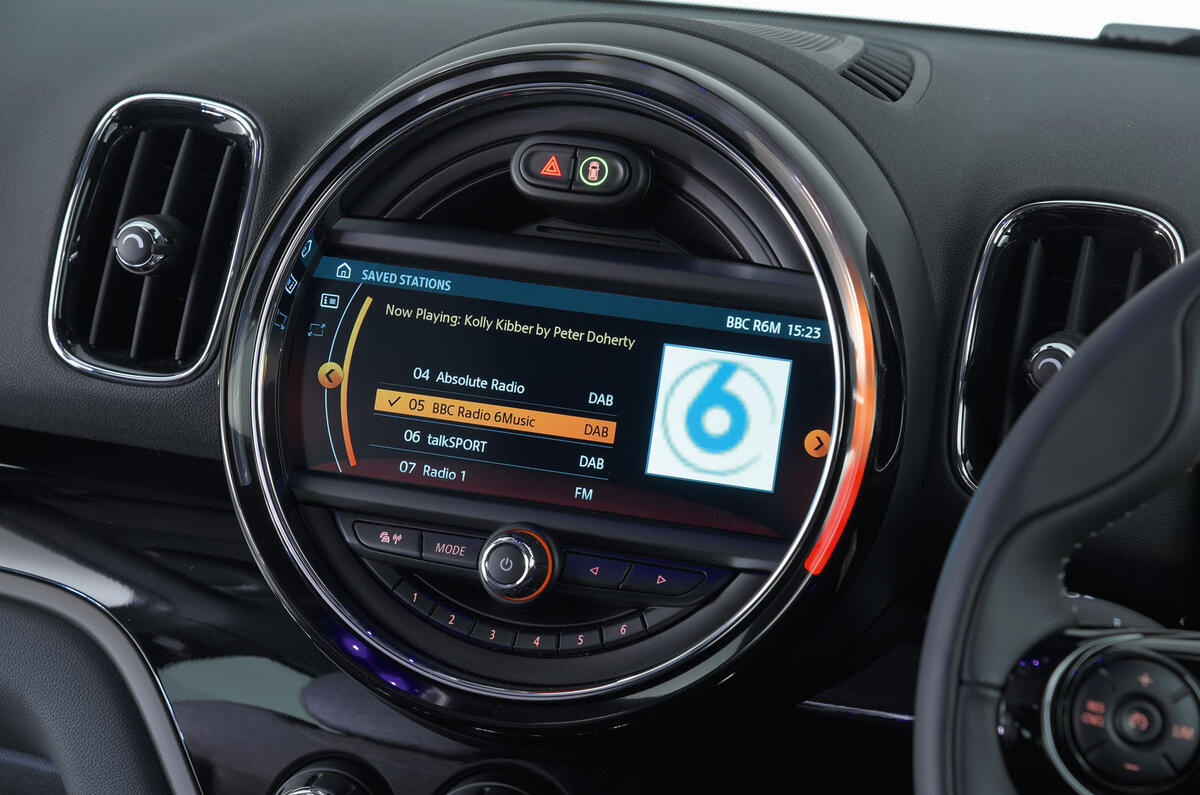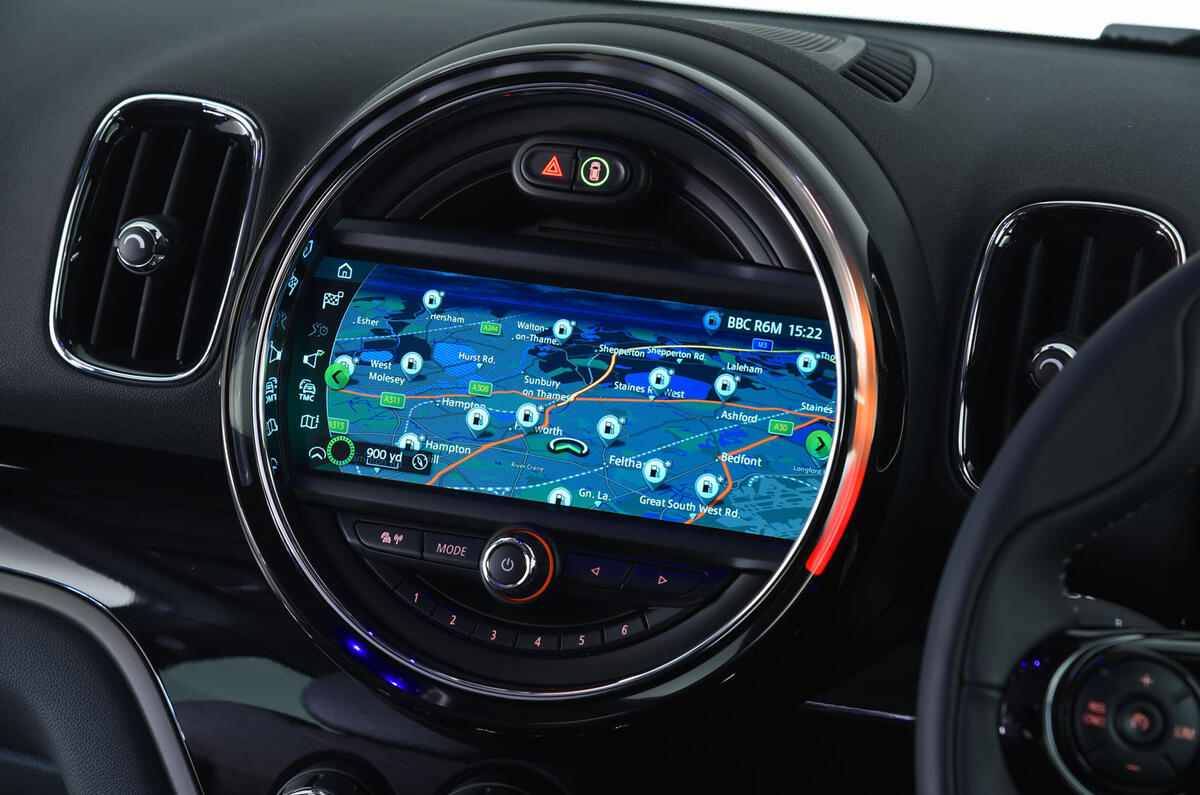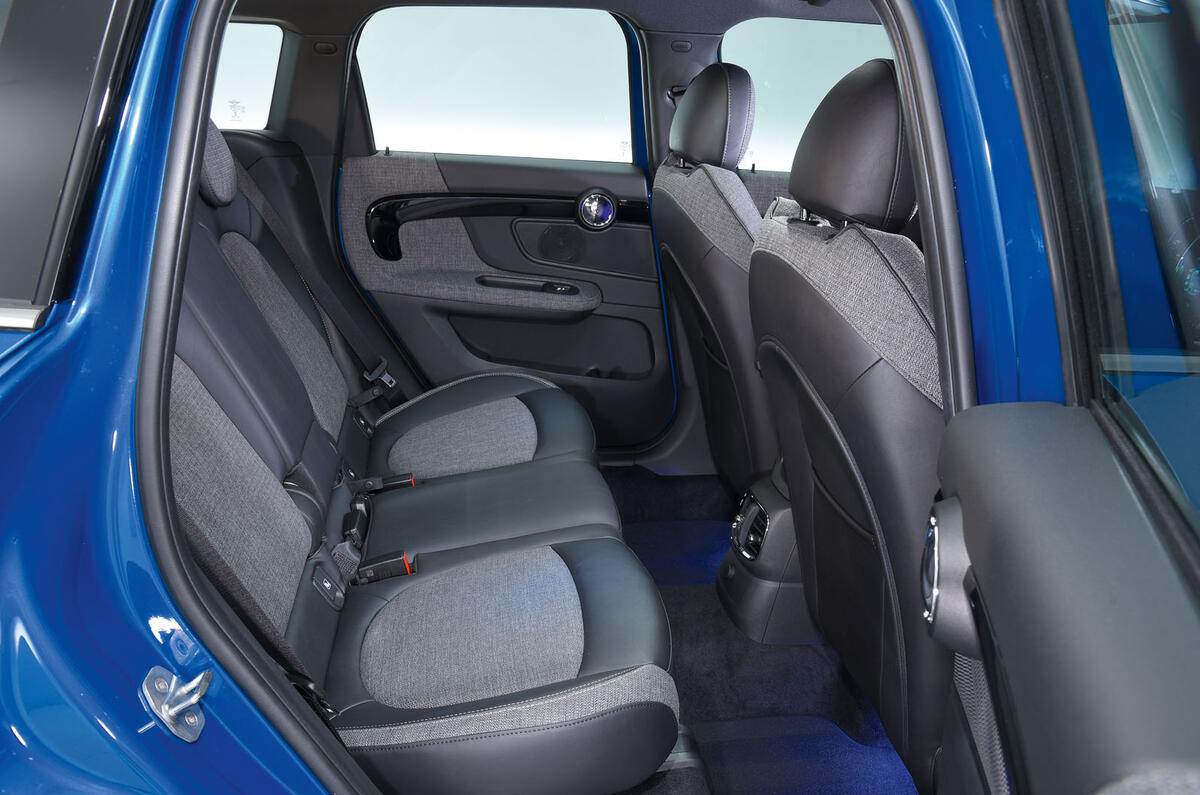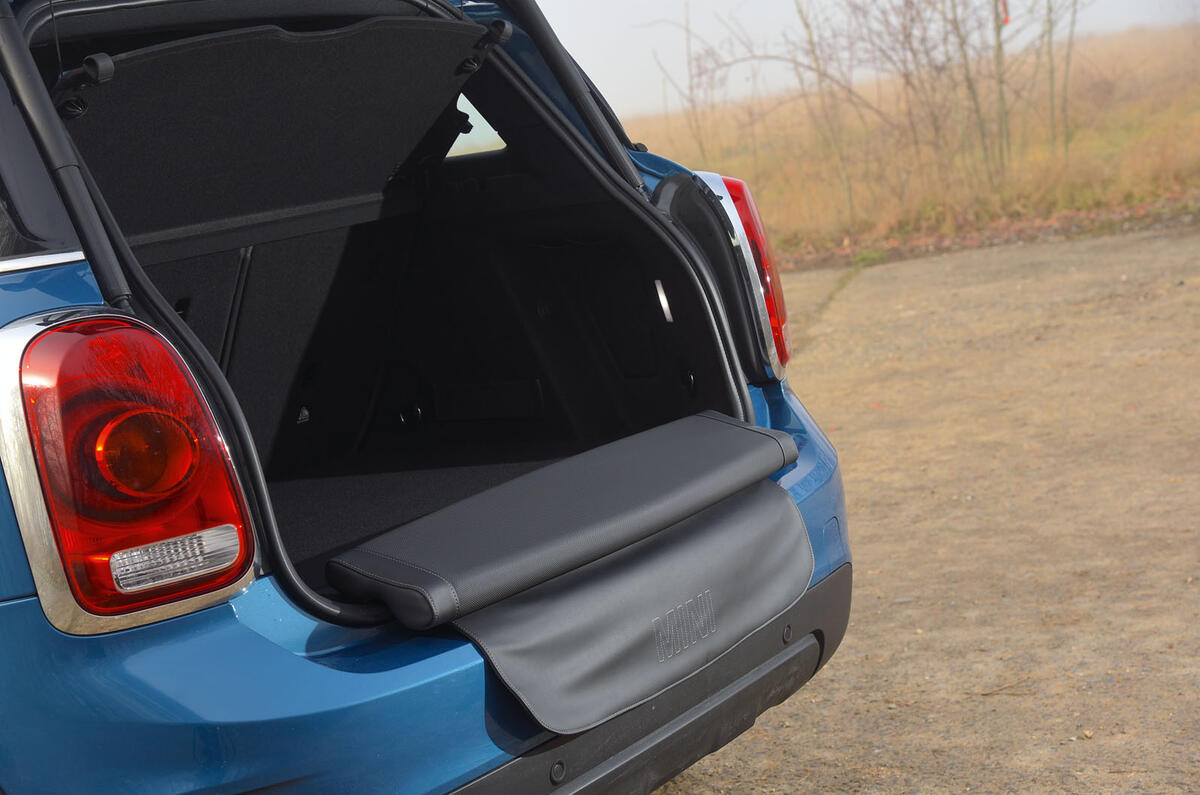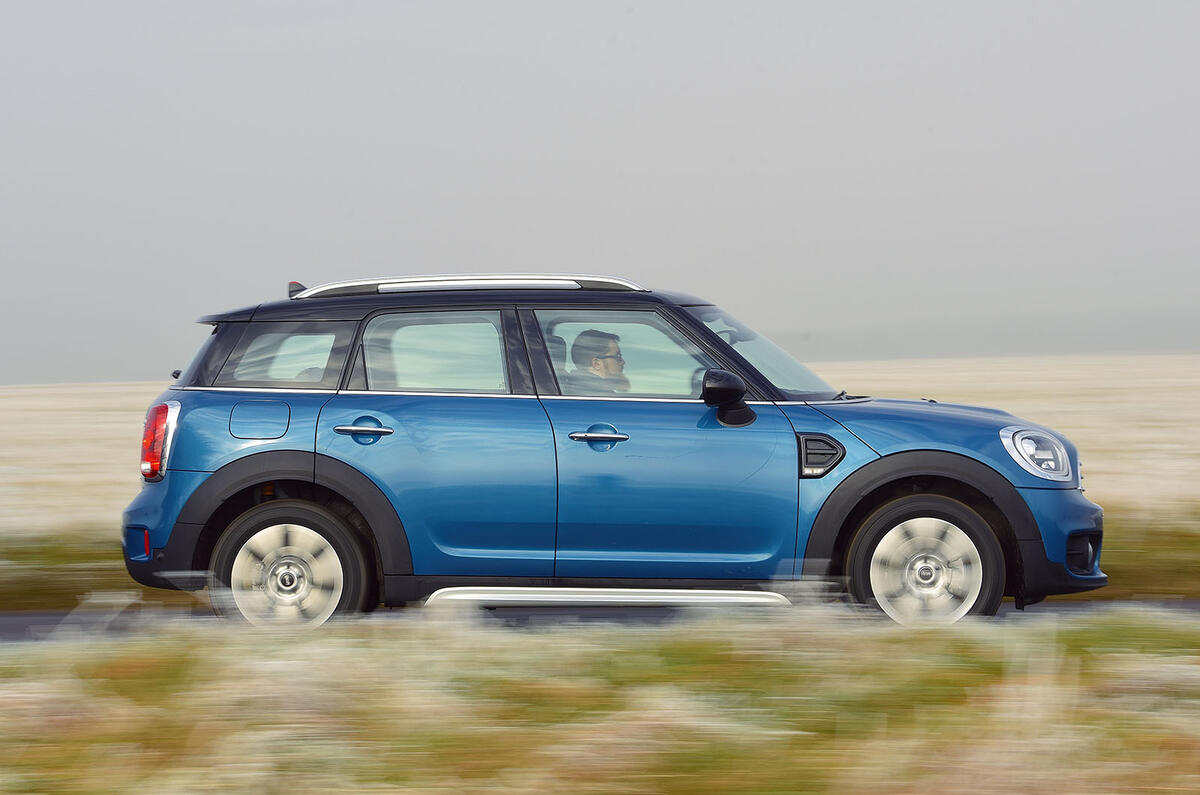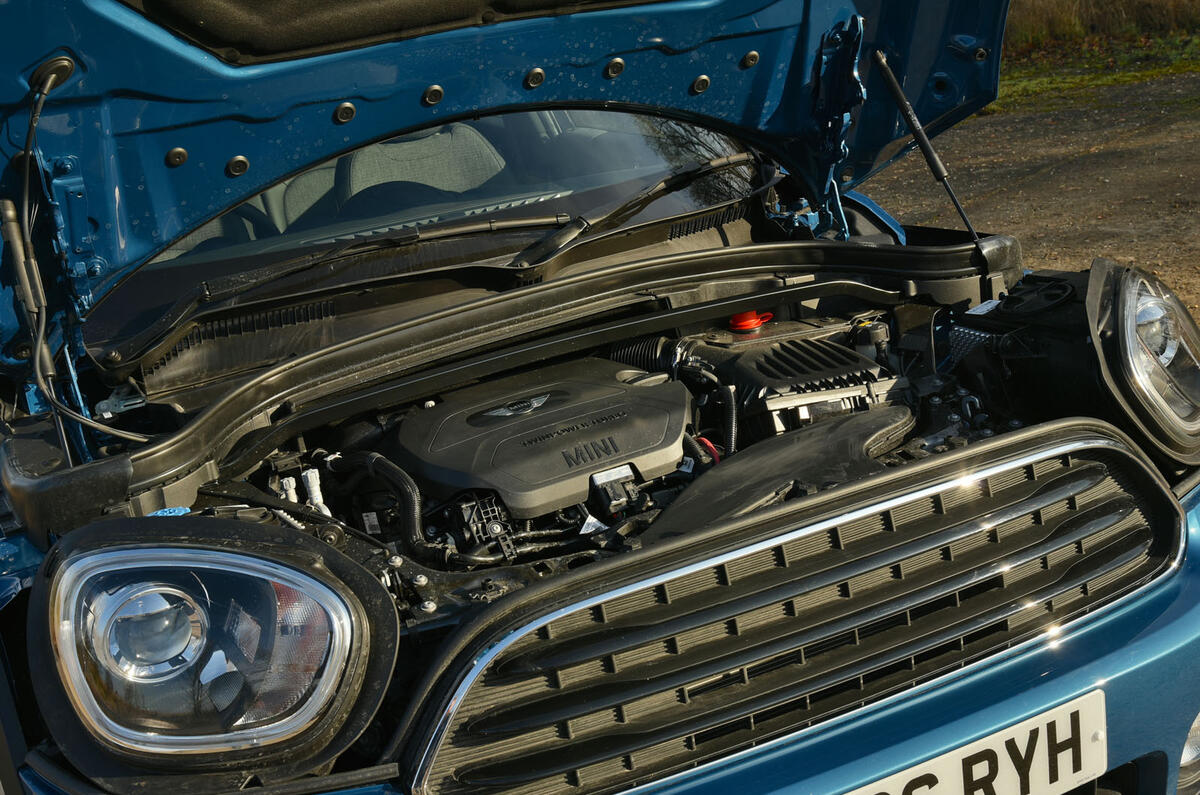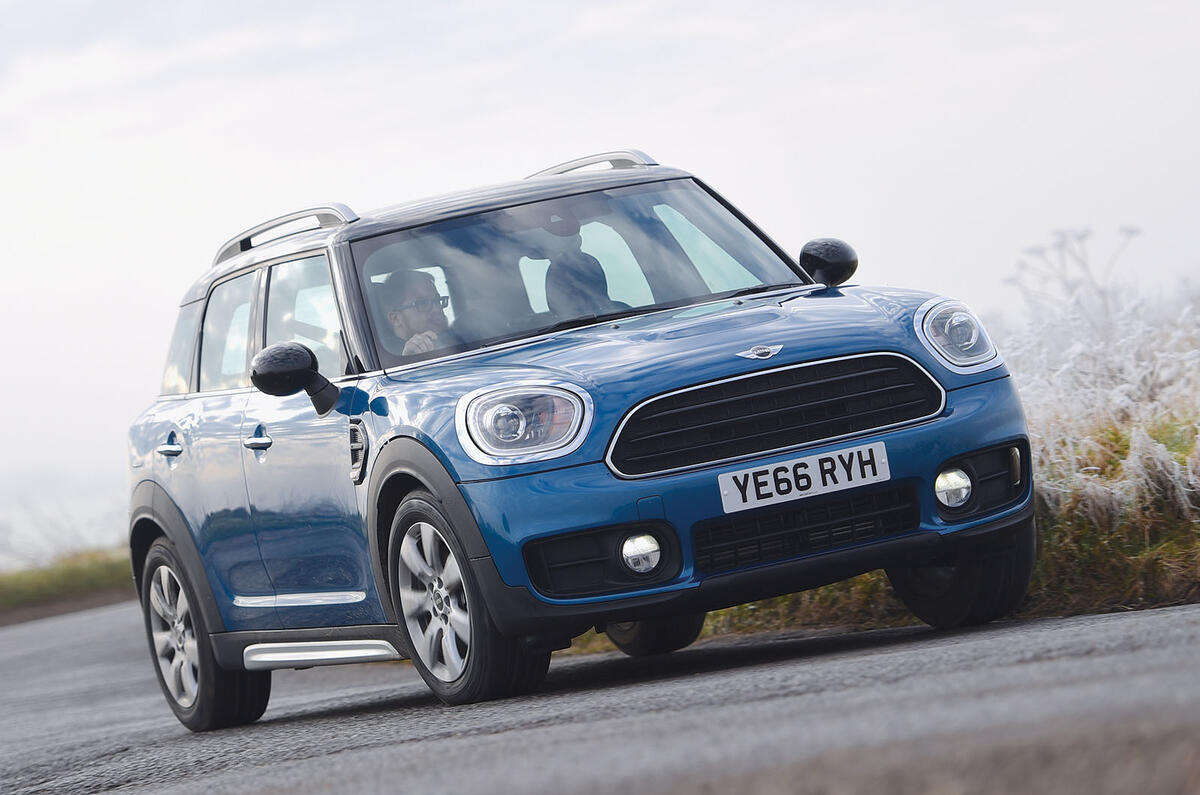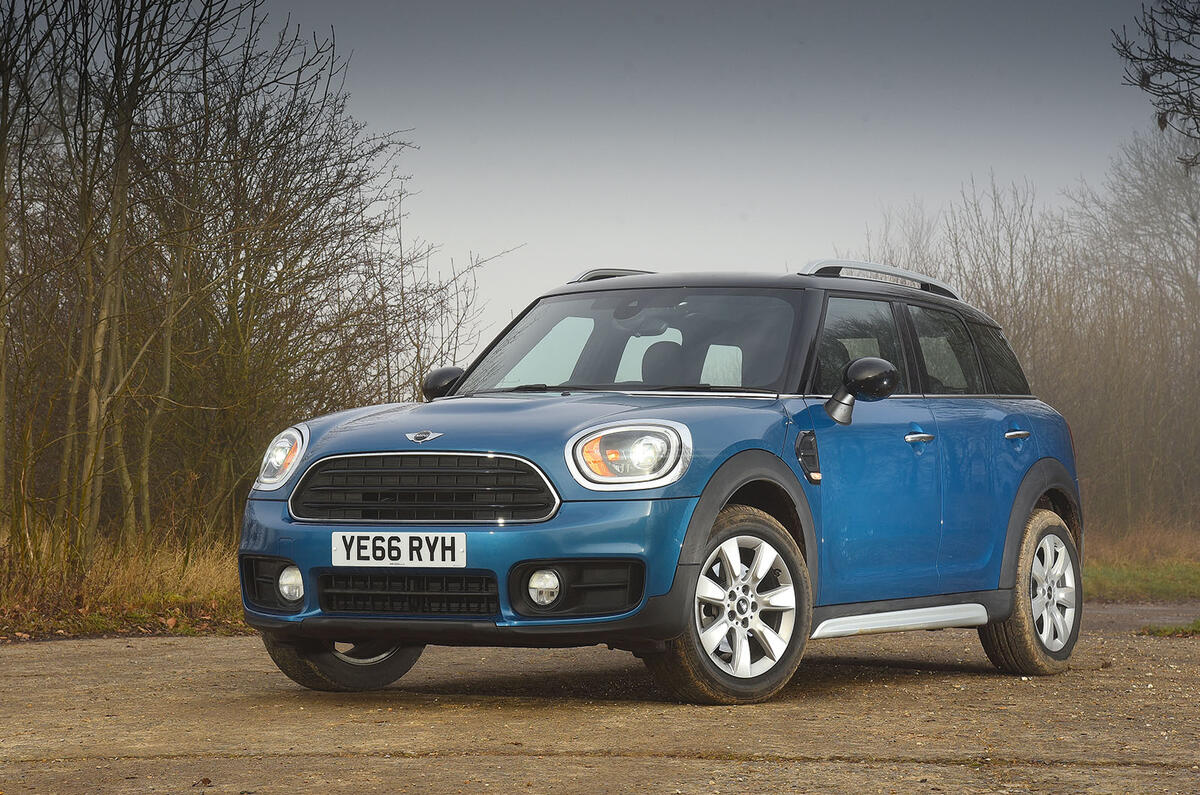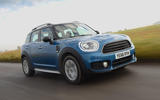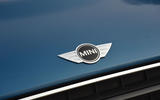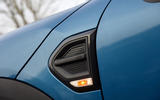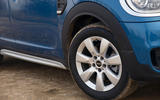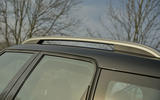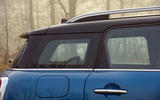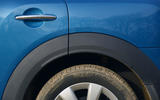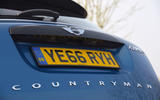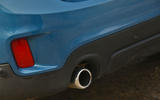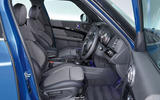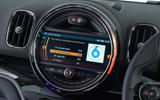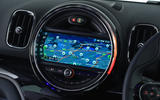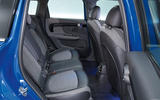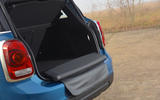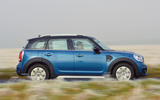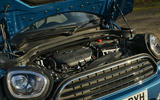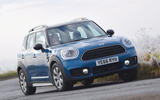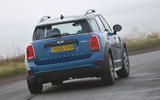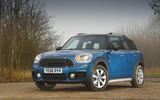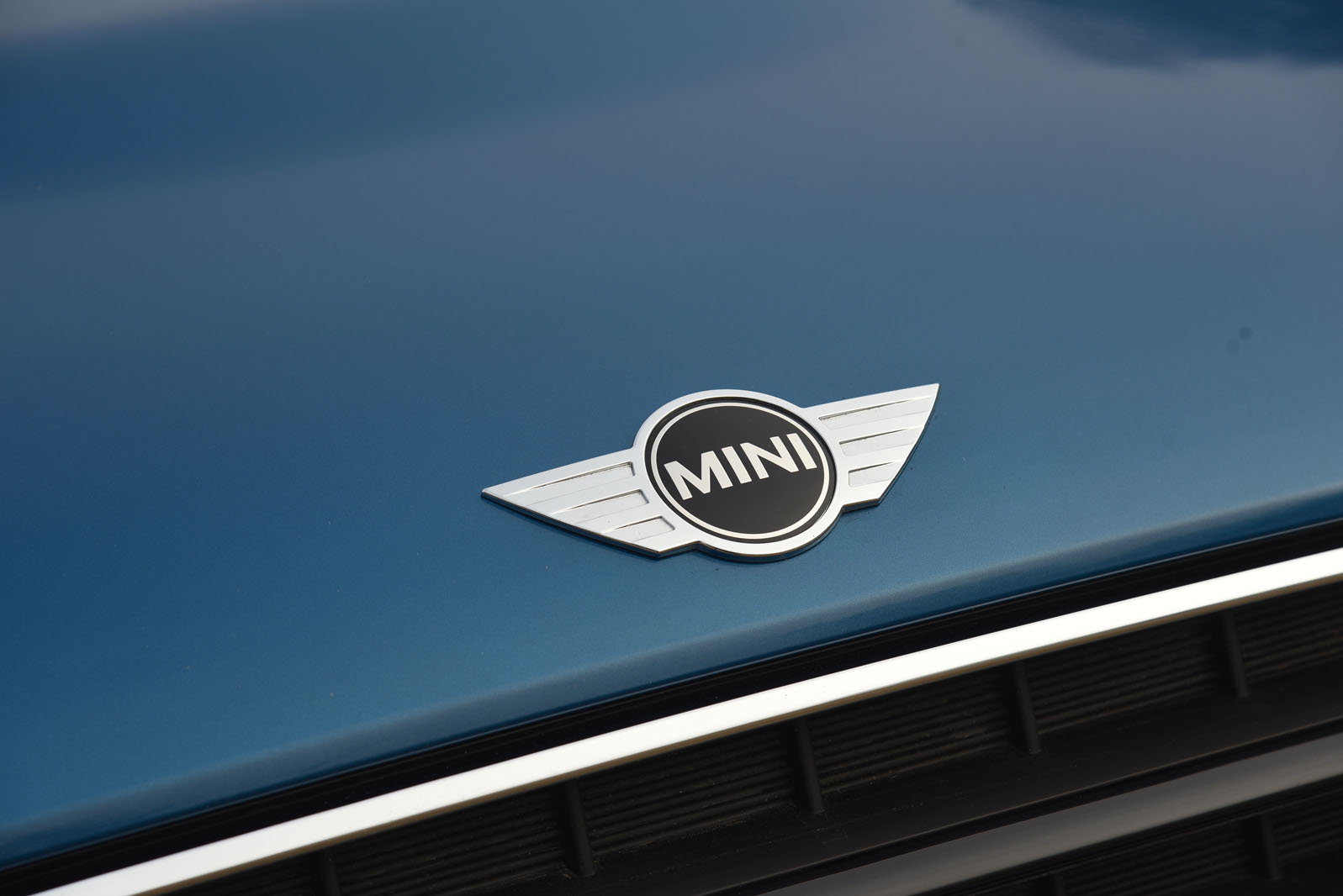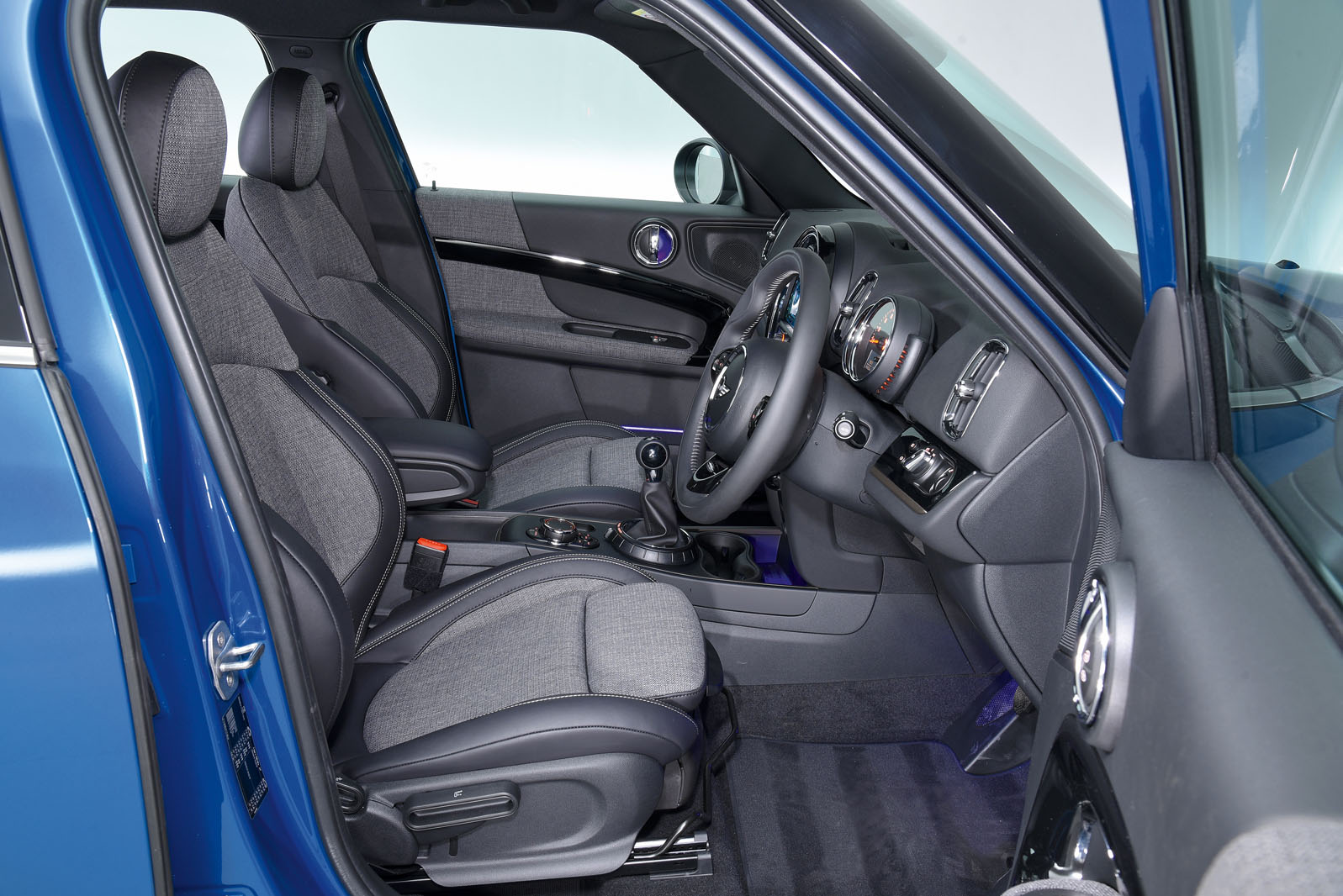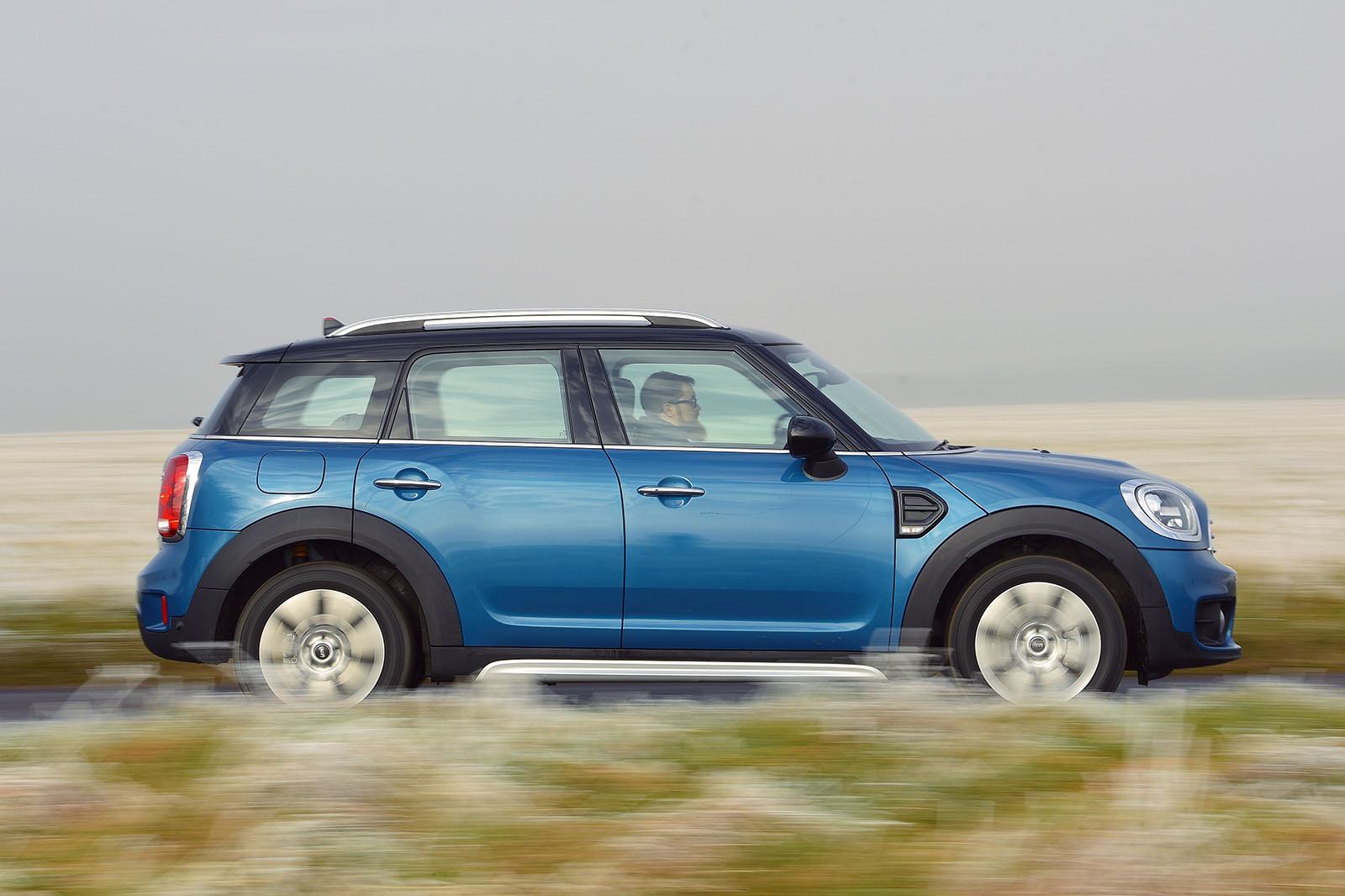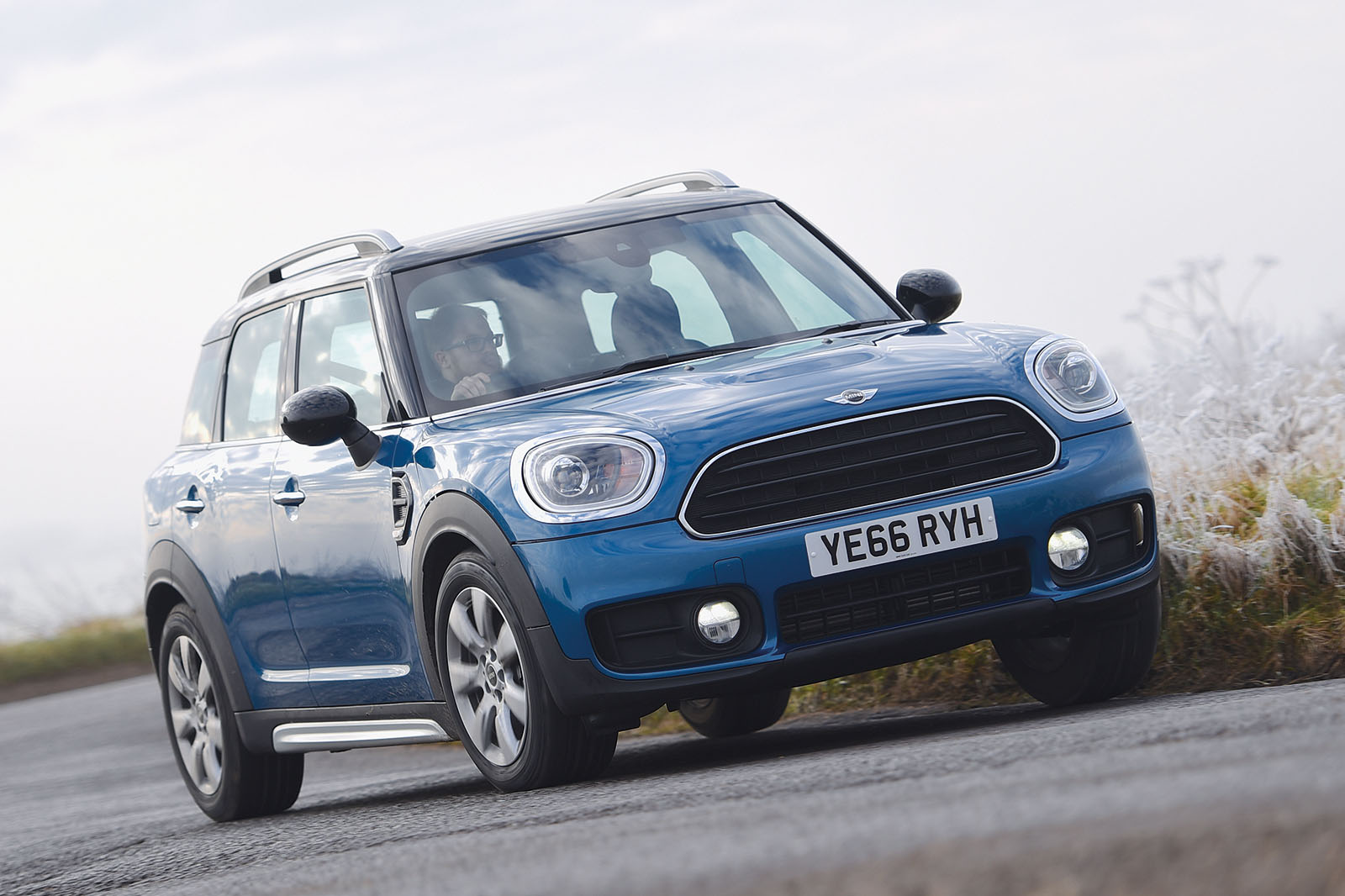Mini aimed for a more materially sophisticated, practical and refined feel for the mk2 Countryman, and the effect of which was best described as ‘bubbling under’ in the busy, chromey, idiosyncratic but not quite uniformly well-finished cabin you'd find in the car.
The grey cloth trim was sombre for a Mini (as was the piano black trim over much of the fascia), but it was wrapped around front seats that offered more adjustment than those of the firm’s lesser models, as well as a little bit more cushioning than Mini’s habitual standard.
There was plenty of head room, too, and for a Mini, this was certainly progress towards the comfort and versatility of a ‘normal’ five-seat hatch – more of it, anyway, than the Mini Clubman offered.
The back seats afforded less opportunity for adjustment, and yet there were three child-sized seats here or plenty of room for two adults if you prefer, thanks to a bench that could split and slide forwards and backwards.
Even by the standards of practical and considerably more prosaic family five-doors, such as the Skoda Octavia and Vauxhall Astra, the Countryman’s interior space wasn't likely to disappoint.
Its hand remaimed strong in the boot, with 450 litres of space on a level with the load lip, a roomy bit of storage underneath the false floor and back seats that at once reclined at various angles and also folded 40/20/40.
The Countryman Cooper D came with a colour navigation system and DAB radio as standard, so, unlike some of the brand’s other models, it wasn't in need of further expenditure. The Media Pack was a popular upgrade for the car, however, combining enhanced Bluetooth with wireless charging, Mini Navigation XL and Mini Connected XL.
Spending the extra enlarged the infotainment screen from 6.5in to 8.8in and, for the first time in a Mini, you got touchscreen input as an alternative to the rotary ‘touch controller’ that any Mini or BMW driver would be used to.
The touchscreen options were displayed at a useful scale and were easy to navigate, and you would often end up switching menus and radio stations that way because it was easier than reaching for the iDrive-style rotor.
The audio system was strong and clear, Bluetooth phone pairing was easily done, call quality was good and the satellite navigation system was excellent. In other words, you'll want to make sure a used car has this fitted to it.
As for standard equipment, the Mini Cooper models came with 16in alloy wheels, front foglights, automatic wipers, heated wing mirrors on the outside as standard. Inside there was air conditioning, a leather-clad steering wheel and Mini's Visual Boost infotainment system complete with Bluetooth and USB connectivity, DAB tuner and sat nav.
Choosing a Cooper S variant added a twin chrome exhaust system, manually adjustable sports seats and 17in alloy wheels. The Cooper S E hybrid model included charging cables and unique software for its infotainment system.
Topping the range was the Countryman John Cooper Works model, which came with a beefy bodykit, sports suspension, 18in lightweight alloy wheels, LED headlights and half leather upholstery.
A variety of packs were also available, including Chili and JCW Chili. The former added part leather upholstery, added storage areas, front heated sports seats, climate control, LED head and fog lights and larger alloys.



